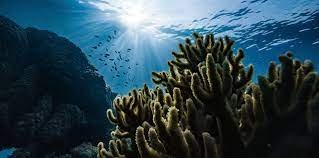D2 Commissioning Testing plays a vital role in the maritime industry by verifying the performance and compliance of ballast water management systems (BWMS). This testing ensures that these systems meet international regulations and help protect marine ecosystems. Understanding the process, its importance, and best practices is essential for shipowners and operators aiming for seamless operations and regulatory adherence.
Understanding D2 Commissioning Testing
D2 Commissioning Testing evaluates the ability of a ship’s BWMS to meet the D2 discharge standard set by the International Maritime Organization (IMO). The D2 standard specifies the maximum allowable concentration of viable organisms in discharged ballast water. This ensures that ballast water treated by the system does not introduce invasive aquatic species into new environments.
Carried out during the commissioning phase of the BWMS, this testing validates the system’s functionality under real operational conditions, providing assurance that the treated water meets regulatory standards.
Significance of D2 Commissioning Testing
Regulatory Compliance: Testing ensures that the BWMS complies with international standards, including the IMO and regional requirements like those set by the United States Coast Guard (USCG). Non-compliance can result in fines, detention of vessels, or loss of operational certification.
Environmental Protection: By preventing the release of invasive species into non-native habitats, D2 Commissioning Testing supports global efforts to maintain marine biodiversity and ecosystem health.
Operational Reliability: A properly tested system reduces the risk of malfunctions, ensuring smooth operations during a vessel’s lifecycle. This minimizes downtime and enhances overall efficiency.
Industry Reputation: Demonstrating compliance and sustainability reinforces a company’s standing in the global maritime sector, fostering trust among stakeholders and clients.
The D2 Commissioning Testing Process
The process is thorough and involves multiple stages to ensure accuracy and reliability.
Preparation: Before testing begins, the BWMS undergoes a comprehensive inspection to confirm proper installation. Documentation such as system manuals, certifications, and commissioning records is reviewed to ensure all prerequisites are in place.
Sampling and Analysis: Samples of ballast water are collected at the system’s inlet and discharge points. These samples are analyzed to assess the concentration of viable organisms, employing methods such as flow cytometry, ATP measurement, or staining techniques to determine biological activity.
System Performance Verification: The BWMS is operated under typical conditions, simulating real-world scenarios. The discharge water is analyzed to ensure it meets the D2 standard thresholds.
Documentation and Reporting: A detailed report is generated at the end of the process, outlining the testing methodology, results, and any corrective actions required. This documentation serves as evidence of compliance during inspections and audits.
Common Challenges in D2 Commissioning Testing
Sampling Accuracy: Obtaining representative samples of ballast water can be challenging due to factors like flow variability or equipment limitations.
Analytical Precision: Testing methods must provide reliable and rapid results, but the availability and accuracy of these methods can vary.
Operational Constraints: Testing must be integrated into the vessel’s operational schedule without causing delays or disruptions.
Regulatory Differences: Ships operating in multiple jurisdictions may face varying compliance requirements, necessitating additional tests or documentation.
Best Practices for Effective D2 Commissioning Testing
To achieve optimal results, shipowners and operators can adopt several best practices:
Engaging Certified Professionals: Collaborating with accredited testing providers ensures that the testing meets all regulatory standards and is conducted efficiently.
Investing in Quality Equipment: Reliable sampling and analysis tools enhance the accuracy and dependability of test results.
Proactive Scheduling: Planning testing well in advance minimizes disruptions and allows time to address any issues uncovered during the process.
Thorough Documentation: Maintaining comprehensive and well-organized records ensures readiness for regulatory inspections and audits.
Outcomes of D2 Commissioning Testing
D2 Commissioning Testing delivers significant benefits, including:
- Verification of compliance with international and regional regulations.
- Assurance of BWMS operational reliability and efficiency.
- Protection of marine environments by preventing ecological harm.
- Enhanced preparedness for port state inspections, audits, and certifications.
Conclusion
D2 Commissioning Testing is an essential process for ships equipped with ballast water management systems. By validating compliance with stringent international standards, it not only safeguards marine ecosystems but also ensures operational efficiency and regulatory confidence.
Shipowners and operators should prioritize testing by partnering with experienced providers, employing reliable technologies, and adhering to best practices. Proactive compliance measures foster sustainable operations, secure industry reputation, and contribute to the long-term health of our oceans.



